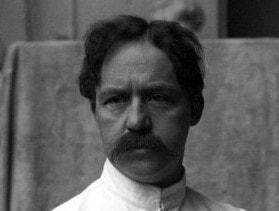
Paul LANDOWSKI
Born in Paris in 1875, Paul Landowski was destined for erudite, literary and intellectual studies in hypokhâgne before becoming interested in sculpture. He enrolled at the Académie Jullian, where he studied the representation of human anatomy. In 1895, he entered the Ecole des Beaux-Arts in Paris, where he worked in Barrias's studio. He was awarded the ultimate prize, the Premier Prix de Rome in 1900 for David Combattant, which is a balanced and a highly dynamic composition. This enabled him to spend a long time at the Villa Medici in Rome and to travel to Tunisia, where he discovered the Orient.
As a young sculptor, he was already imagining a monumental total work, a Temple of Man, which would be a cross between modern aesthetics and the tradition of sculpted relief to the glory of the hero. This project would accompany him throughout his career. This interest in the monumental approach was quickly exploited, as he received prestigious public commissions throughout his life: the monument to unknown artists for the Panthéon in 1914; the Fantômes de la Butte Chalmont in 1920 etc... His major work was the gigantic Christ the Redeemer in Rio, inaugurated in 1931. He continued to receive public commissions, but agreed to hold a number of posts, including director of the Académie de France in Rome in 1933. He died in 1961.

